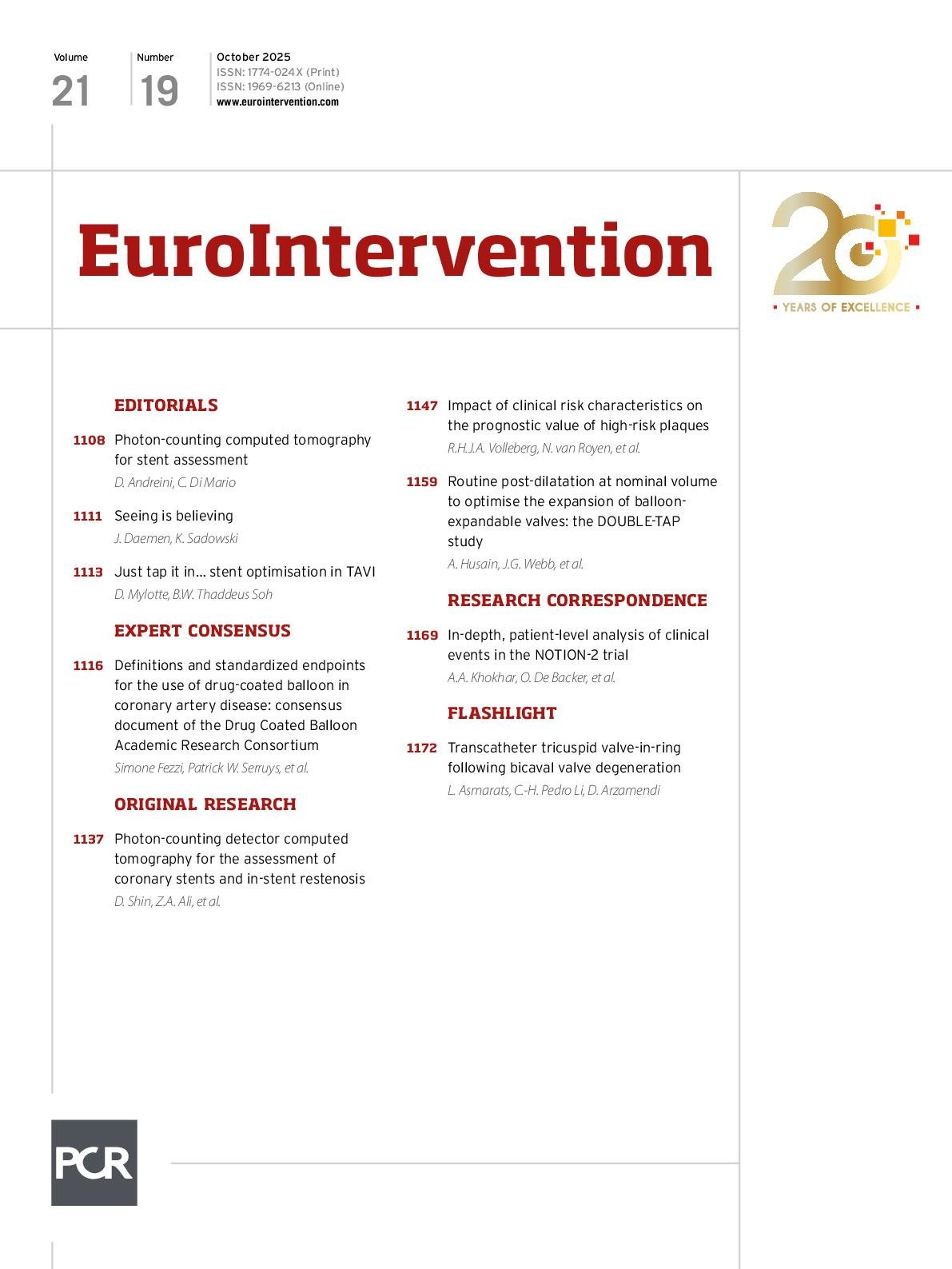Traditionally, balloon post-dilatation following transcatheter aortic valve implantation (TAVI) was routinely performed to address paravalvular leak (PVL), clearly malexpanded valves with residual gradients, and occasionally, as a salvage manoeuvre for deeply implanted transcatheter heart valves (THV). The advent of computed tomographic sizing, external anti-PVL skirts, repositionable device technology, and increasing operator experience has more recently rendered routine post-dilatation less common: it is performed in approximately 20% of cases1, with lower rates for balloon-expandable valves (BEV)2. What are the potential drawbacks of post-dilatation? These include exposing the patient to an additional pacing run, increased procedural and fluoroscopic times, the cost of a balloon, and potential damage to the valve leaflets. Bench studies have shown that post-dilatation can leave an imprint of the THV frame on leaflet tissue, suggesting possible compromise of leaflet integrity3. The risk of THV embolisation, a disagreeable complication for both patient and operator, is often cited as a reason to avoid post-dilatation, especially with high implantation. And then, there are observational data that associate post-dilatation with higher rates of stroke and death45. These...
Sign up for free!
Join us for free and access thousands of articles from EuroIntervention, as well as presentations, videos, cases from PCRonline.com

